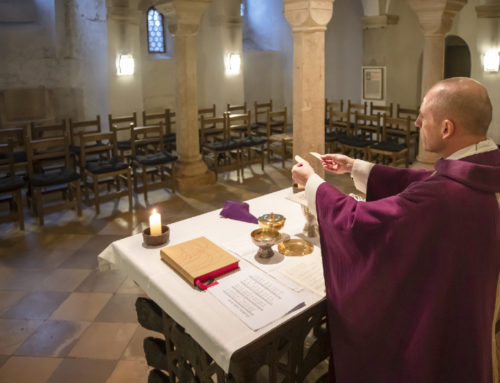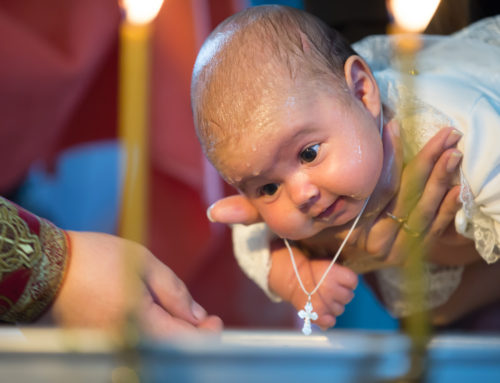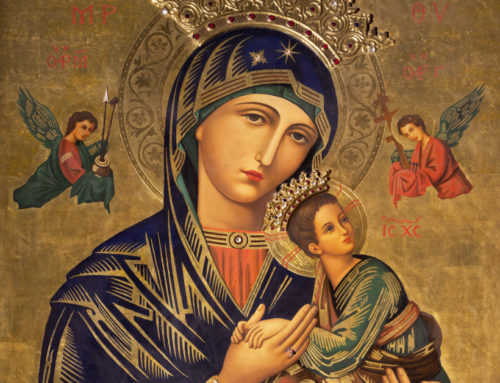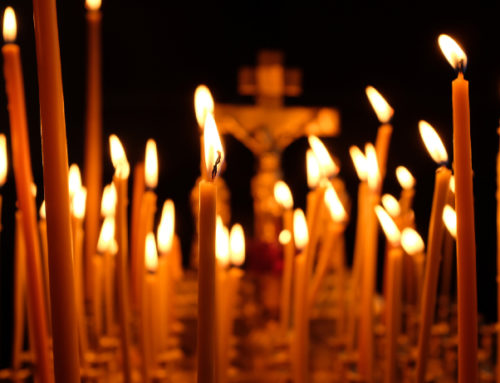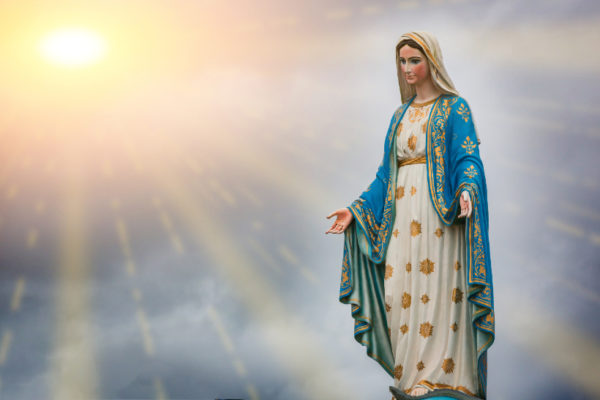
Virgin Mary statue and sunset at the Catholic Church Chanthaburi province, Thailand
I heard that the Eastern Catholics don’t believe in original sin. Is that correct?
That is certainly not correct. Eastern Catholics do believe in original sin, although there is a slightly different understanding of it as well as a different way of expressing it.
The Latin Church’s vision of original sin is that of Saint Augustine. He teaches that through the sin of Adam our relationship with God was broken, we lost original justice, but we also inherited the “stain” of Adam’s sin. It is this stain that is washed away in baptism. Thus, the unbaptized cannot be in God’s presence for they have the stain of sin on their souls. Further, Augustine speaks of “the bonds of inherited guilt.” Finally, of course, we recognize that death is the consequence of original sin. Later teachings in the Latin Rite tell us that we also have a weakening of the will and a lessening of the intellect as a result of original sin.
For the Eastern Catholic, original sin is seen not in terms of stain and guilt, but of the condition of the world into which we are born. The “stain” of the Latin Rite becomes the distortion of the image of God that is the inheritance of all who are created “in the image and likeness” of God. The primary result of original sin, however, is death. Because of this sin, we are bound to die.
Of course, there is some common theology with regard to original sin. We are all made in the image and likeness of God, but that image is distorted because of original sin. In baptism the image is restored. But because we still live in a world affected by original sin, we do not have the relationship with God that we are supposed to have, nor do we have the state of holiness that is also supposed to be present. Therefore, we spend a lifetime of theosis or, as it is called in the West, divinization, attempting to become more and more like God.
I was looking at the feast days for the local Eastern Catholic Church and noticed they don’t celebrate the Immaculate Conception – isn’t that required for all Catholics?
The Eastern Catholic Church believes in the Immaculate Conception, since, as part of being “in communion” with Rome, all dogmatic teachings of the church are accepted. However, holy days are a function fo the particular church and are not universal (with a few exceptions). In this case, the Eastern Churches generally celebrate the Maternity of Anne (Mary’s mother).
The reason for this is technical, but let’s see if we can’t provide a reasonable explanation that doesn’t require a degree in philosophy! the teaching of the Latin Church is based upon the philosophy of the Scholastics, which, in turn, is based upon the philosophy of Aristotle. However, Eastern theology does not use this philosophy and, therefore, does not find that the teachings derived from this are consistent with the Eastern approach.
Since the Eastern understanding of original sin is different from that of the West, the basic premise of the Immaculate Conception makes no sense to the Orthodox East. Since we are all born without original sin (remember, it’s the state of the world into which we are born), it follows that this teaching on Mary is not quite the same in the East. However, the understanding of the West is that Mary was without sin from the moment of her conception, while the Eastern understanding is that Mary was “ever sinless.” This may sound like it is the same thing, but it isn’t. Rather, the Eastern view is that Mary may have been affected by original sin since that is the condition of the world. And, rather than think this is only an Eastern view, we need to acknowledge that many theologians attempt to come to grips with the issue of Mary’s sinlessness. Saint Thomas Aquinas, for example, held that Mary was “first conceived in the flesh, and afterwards sanctified in the spirit.” Of course, this was before the Latin Church formally introduced the teaching of the Immaculate Conception. That teaching finds its basis in the theology of “anticipatory redemption” found in the work of John Duns Scotus and William of Ware.
Eastern teachings on Mary may have an even greater emphasis on Mary than the West. For Eastern Catholics she is the Theotokos (Mother of God). She is “higher than the Seraphim, more glorious than the Cherubim.” Her icon is always to the left of the holy doors as one faces the iconostasis (literally “icon stand,” but, in the Byzantine tradition, the “wall” that separates the “holy place” or sanctuary from the main body of the church, upon which are placed icons). In the litanies chanted at the Divine Liturgy we find this: “Let us remember our all-holy, spotless, most highly blessed and glorious Lady the Theotokos and ever-virgin Mary.”
Excerpt from Faulk, Edward. 101 Questions and Answers on Eastern Catholic Churches. (Paulist Press: Mahwah, NJ) 2007.

